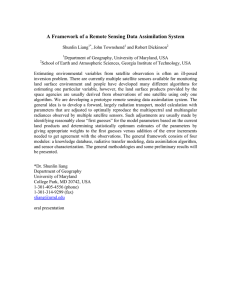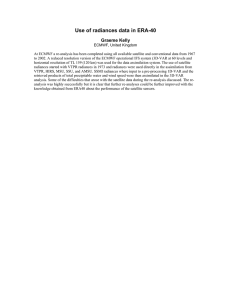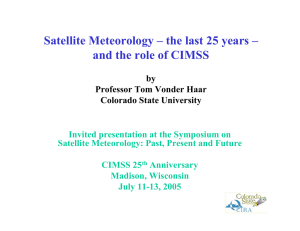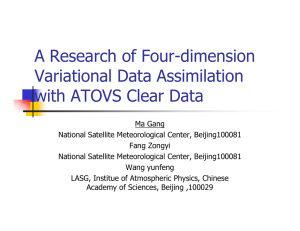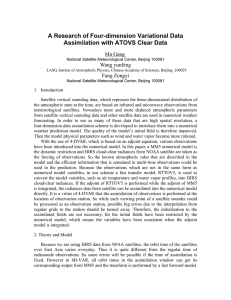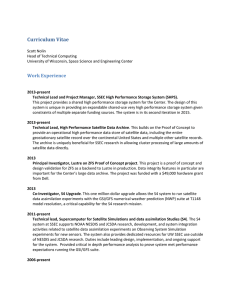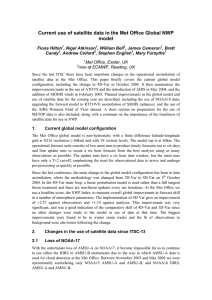ASSIMILATION OF SATELLITE DATA INTO LAND SURFACE MODELS
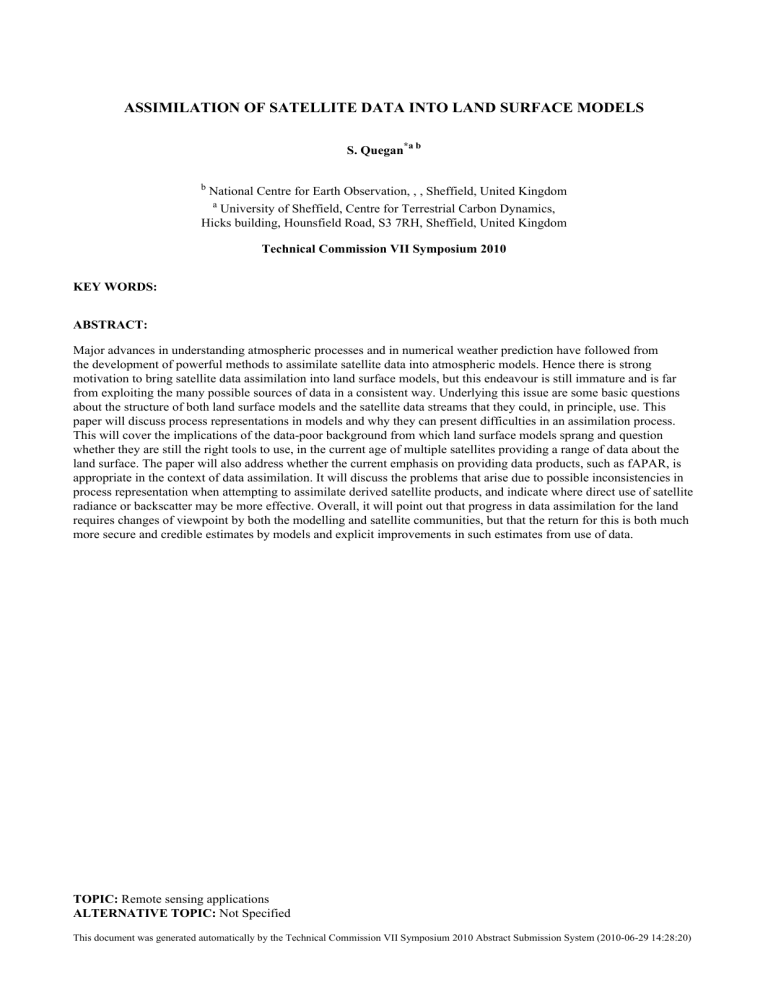
ASSIMILATION OF SATELLITE DATA INTO LAND SURFACE MODELS
S. Quegan
*a b b
National Centre for Earth Observation, , , Sheffield, United Kingdom a
University of Sheffield, Centre for Terrestrial Carbon Dynamics,
Hicks building, Hounsfield Road, S3 7RH, Sheffield, United Kingdom
Technical Commission VII Symposium 2010
KEY WORDS:
ABSTRACT:
Major advances in understanding atmospheric processes and in numerical weather prediction have followed from the development of powerful methods to assimilate satellite data into atmospheric models. Hence there is strong motivation to bring satellite data assimilation into land surface models, but this endeavour is still immature and is far from exploiting the many possible sources of data in a consistent way. Underlying this issue are some basic questions about the structure of both land surface models and the satellite data streams that they could, in principle, use. This paper will discuss process representations in models and why they can present difficulties in an assimilation process.
This will cover the implications of the data-poor background from which land surface models sprang and question whether they are still the right tools to use, in the current age of multiple satellites providing a range of data about the land surface. The paper will also address whether the current emphasis on providing data products, such as fAPAR, is appropriate in the context of data assimilation. It will discuss the problems that arise due to possible inconsistencies in process representation when attempting to assimilate derived satellite products, and indicate where direct use of satellite radiance or backscatter may be more effective. Overall, it will point out that progress in data assimilation for the land requires changes of viewpoint by both the modelling and satellite communities, but that the return for this is both much more secure and credible estimates by models and explicit improvements in such estimates from use of data.
TOPIC: Remote sensing applications
ALTERNATIVE TOPIC: Not Specified
This document was generated automatically by the Technical Commission VII Symposium 2010 Abstract Submission System (2010-06-29 14:28:20)
